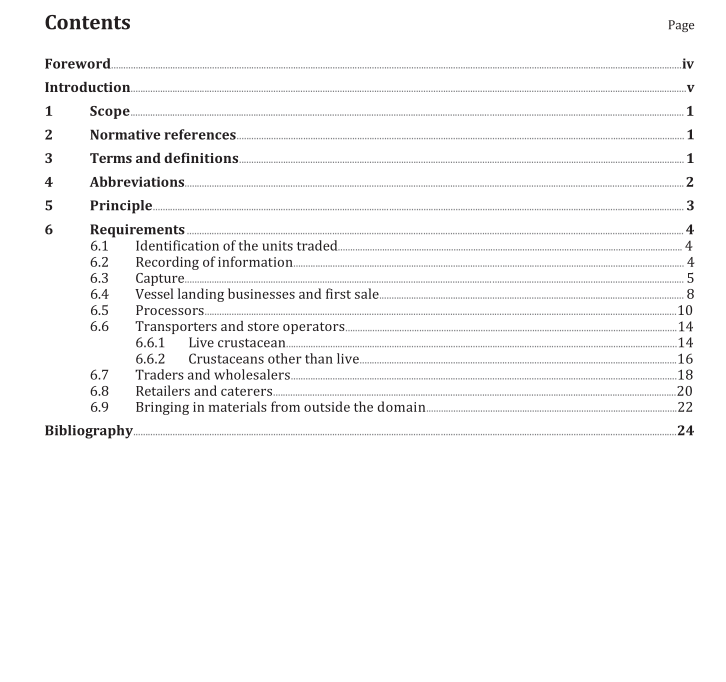BS ISO 18537:2015 pdf download.Traceability of crustacean products — Specifications on the information to be recorded in captured crustacean distribution chains
5 Principle
The fundamental principle of chain traceability is that trade units (TU) shall be identified by unique codes (UI). This code may be globally unique in itself (for instance, the GS1 SGTIN or EPC numbers) or it could be unique in that particular scope only, which means that it should be no other TUs in that part of the chain that may have the same number. If the scope (the product type, the company, the chain, the sector, the country, or similar) is assigned a globally unique number, the combination of the globally unique scope number and the locally unique TU number shall constitute a globally unique identifier for the TU.
NOTE 1 The UTUI term is introduced to indicate a TU identifier which is, or might be, made globally unique.
Trade Units (TUs) may be grouped together to make Logistic Units (LUs) or LUs may be grouped together to make higher level LUs. A fundamental principle of chain traceability is that logistic units shall be identified by a unique code. This code shall be a national code which may be globally unique in itself (similar to the GS1 SSCC code) or it could be unique in that particular scope only, which means that there should be no other LUs in that part of the chain that may have the same number. If the scope (the product type, the company, the chain, the sector, the country) is assigned a globally unique number, the combination of the globally unique scope number and the locally unique LU number shall constitute a globally unique identifier for the LU. NOTE 2 The ULUI term is introduced to indicate a LU identifier which is, or might be, made globally unique.
The key to the operation of this traceability scheme is the labelling of each unit of goods traded, whether of raw materials or finished products, with a unique ID. This shall be done by the food business that creates each unit. Businesses that transform units, such as processors who convert the units of raw materials received into the products dispatched, shall create new units and shall give them new IDs.
As indicated above, the simplest way of implementing UTUIs and ULUIs is to use the GS1 SGTIN/EPC and SSCC codes. This practice is recommended, but is not mandatory. The central principle behind this standard is that businesses which create TUs or LUs should assign unique numbers to them. Each of the food businesses that create or physically trade in those units, throughout the distribution chains from catcher through to retailer or caterer, shall generate and hold the information necessary for traceability. The information is to be held on paper or electronically keyed to the unit IDs.
6 Requirements
6.1 Identification of the units traded
Businesses that bring in supplies of captured crustacean products from outside of the domain of the specifications and trade them onwards shall identify each unit traded and record associated information elements as indicated in Table 3 to Table 10.
6.2 Recording of information
To distinguish between the different categories of information, all information elements are classified as either “shall”, “should”, or “may”, with definition (see Table 1).
The information specifications separately tabulate the information to be recorded by each of these types of business. Some businesses may carry out the functions of more than one of the types listed, for example, distribution businesses may act as wholesalers and as transporters, in which case those businesses shall record the relevant information requirements for each of the functions carried out.
NOTE 1 This International Standard is limited in scope to the distribution for human consumption of crustacean and their products. The captured crustacean information specifications are substantially the same from processing onward.BS ISO 18537 pdf download.BS ISO 18537 pdf download
